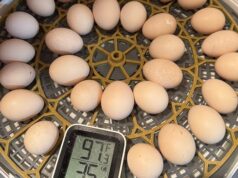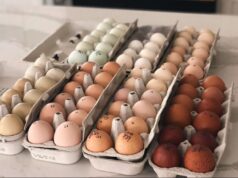For chicken enthusiasts, creating the perfect environment for their feathered friends is paramount. One essential element of a safe and comfortable coop is the nesting box. But instead of purchasing pre-made options, why not try your hand at DIY nesting box plans? Not only do you save money, but you also have the satisfaction of crafting something yourself. This guide will walk you through the process, ensuring your chickens have the perfect place to lay eggs.

The Importance of Nesting Boxes
Before diving into the DIY nesting box plans, it’s vital to understand why nesting boxes are crucial. Nesting boxes provide a safe and private space for hens to lay their eggs, reducing stress and ensuring eggs are laid in a consistent location. A well-designed nesting box can improve egg production and keep your hens happy.
Choosing the Right Materials
Wood: A Classic Choice
Wood is the most common material for nesting boxes due to its durability and availability. When selecting wood, consider untreated pine or plywood, which are safe for chickens and resistant to pests.
Alternative Materials
For those looking for a more creative approach, consider using plastic bins, metal containers, or even repurposed furniture. These materials can be just as effective and add a unique touch to your coop.
Designing Your DIY Nesting Box Plans
Size Matters
When crafting your nesting box, size is crucial. Each box should be at least 12x12x12 inches, providing ample space for your hens to move comfortably. If you’re housing larger breeds, consider increasing the dimensions slightly.
Ensuring Comfort
Line the bottom of each box with soft bedding, such as straw or pine shavings. This not only provides comfort for the hens but also protects the eggs from damage.
Step-by-Step Guide to Building Your Nesting Box
Gathering Your Tools
You’ll need a saw, hammer, nails, and a measuring tape for most DIY nesting box plans. If you’re using alternative materials, a drill or screwdriver may also be necessary.
Cutting and Assembling the Box
Start by cutting your chosen material into the desired dimensions. Assemble the sides, ensuring each piece is securely fastened. Add a sloped roof to prevent hens from roosting on top.
Adding the Finishing Touches
Once assembled, smooth any rough edges with sandpaper to prevent injury to your hens. Consider adding a perch at the entrance for easy access.
Positioning Your Nesting Boxes
Place your nesting boxes at a height where hens can easily access them. It’s ideal to position them away from direct sunlight and in a quiet area of the coop. For more insights, check out natural nesting behavior.
Maintaining Your Nesting Boxes
Regular maintenance of your nesting boxes is crucial. Clean out old bedding weekly and replace it with fresh materials. Inspect the boxes regularly for any signs of wear and tear. For tips on maintaining nesting boxes, you might find this guide on small chicken coops helpful.
Benefits of DIY Nesting Box Plans
Creating your own nesting boxes offers numerous benefits. Not only do you customize the design to suit your coop, but you also learn valuable skills in the process. Plus, crafting these boxes is a rewarding experience that connects you more deeply with your poultry.
Common Mistakes to Avoid
Avoid overcrowding by ensuring each box is appropriately spaced. Additionally, ensure the boxes are not too high off the ground, making them inaccessible to hens.
Innovative Ideas for Nesting Boxes
For inspiration on unique designs, consider visiting this external site. They offer a variety of creative approaches to nesting boxes.
Engaging with the Chicken Community
Share your DIY nesting box plans and experiences with fellow chicken lovers. Online forums and local poultry groups are great places to exchange ideas and get feedback.

FAQs
How many nesting boxes do I need?
Typically, one nesting box per four hens is sufficient. However, it’s always better to have a couple of extra boxes to prevent overcrowding.
Can I use recycled materials for nesting boxes?
Absolutely! Many chicken owners successfully use recycled materials like old drawers or crates. Just ensure they are clean and safe for your hens.
How often should I clean the nesting boxes?
It’s recommended to clean the nesting boxes weekly, replacing old bedding with fresh materials to maintain hygiene and comfort.
For more tips on chicken care, explore this helpful resource.
This article contains affiliate links. We may earn a commission at no extra cost to you.











